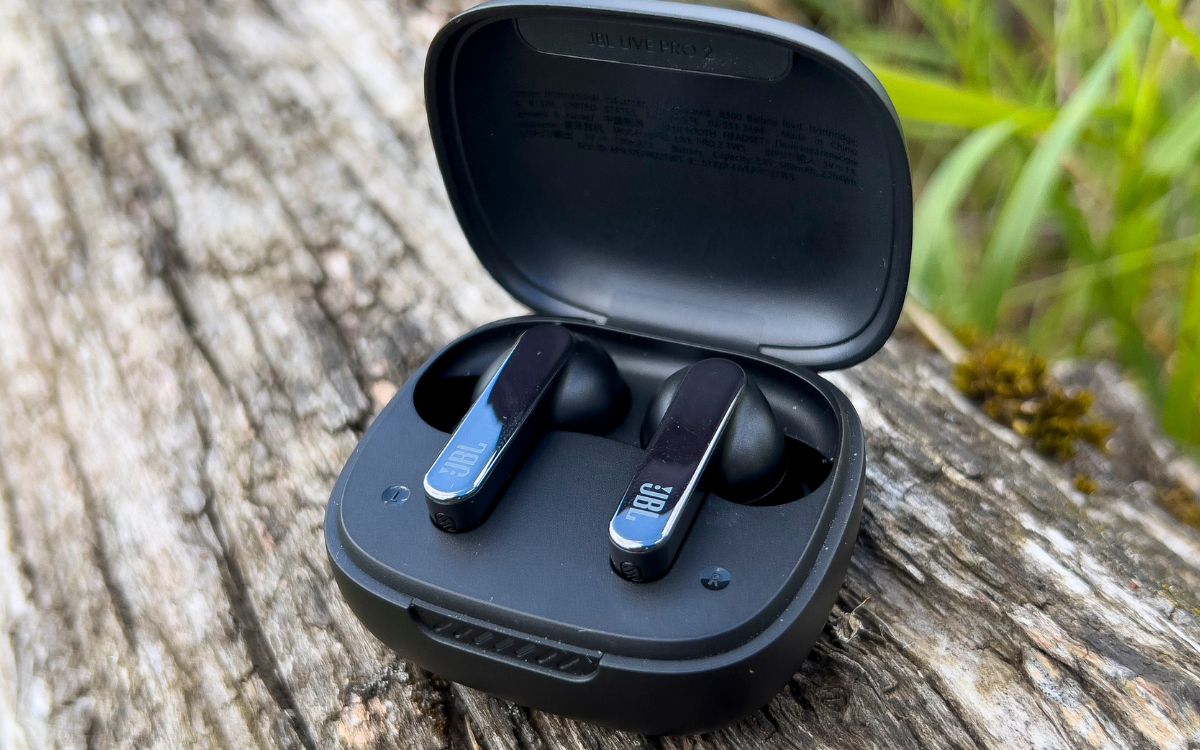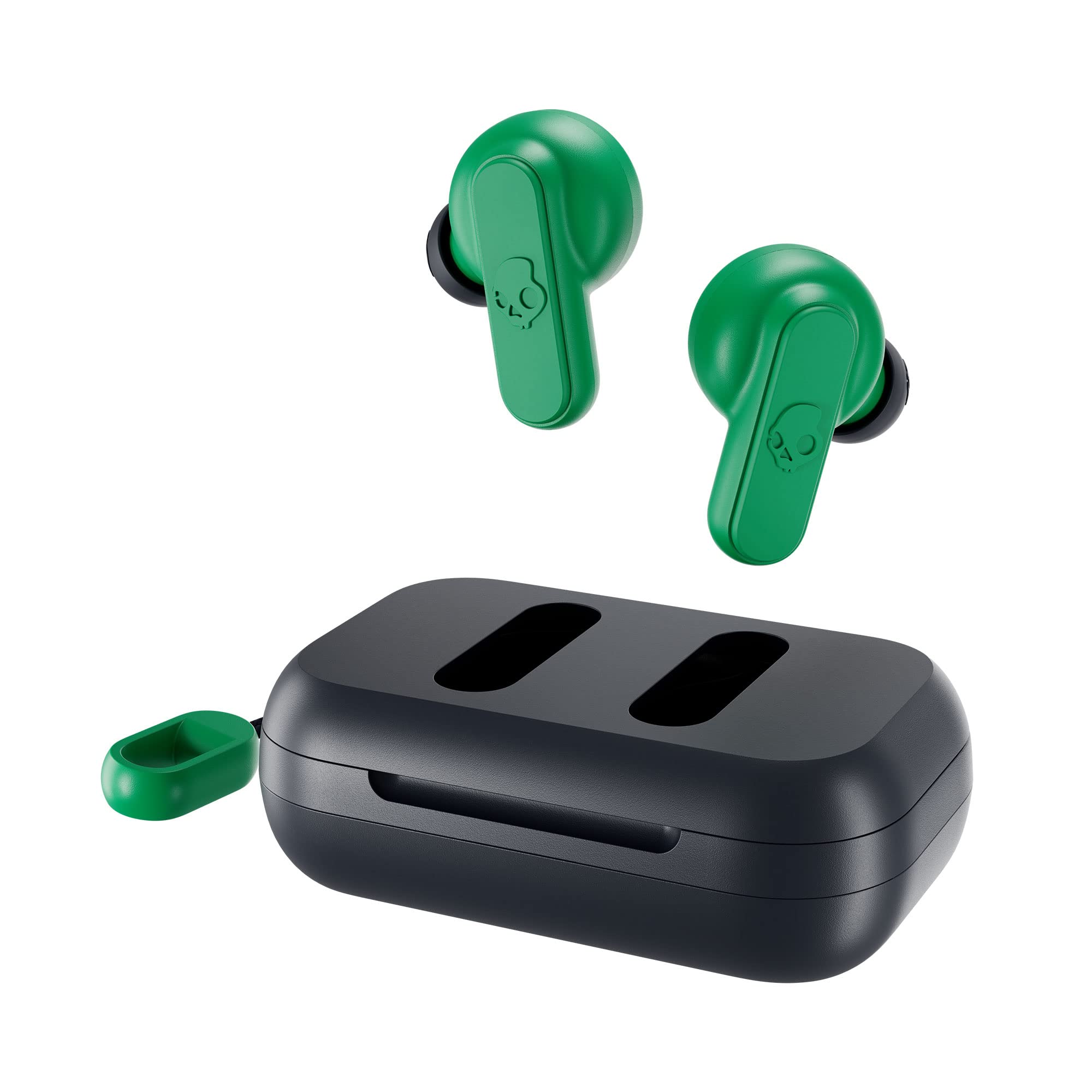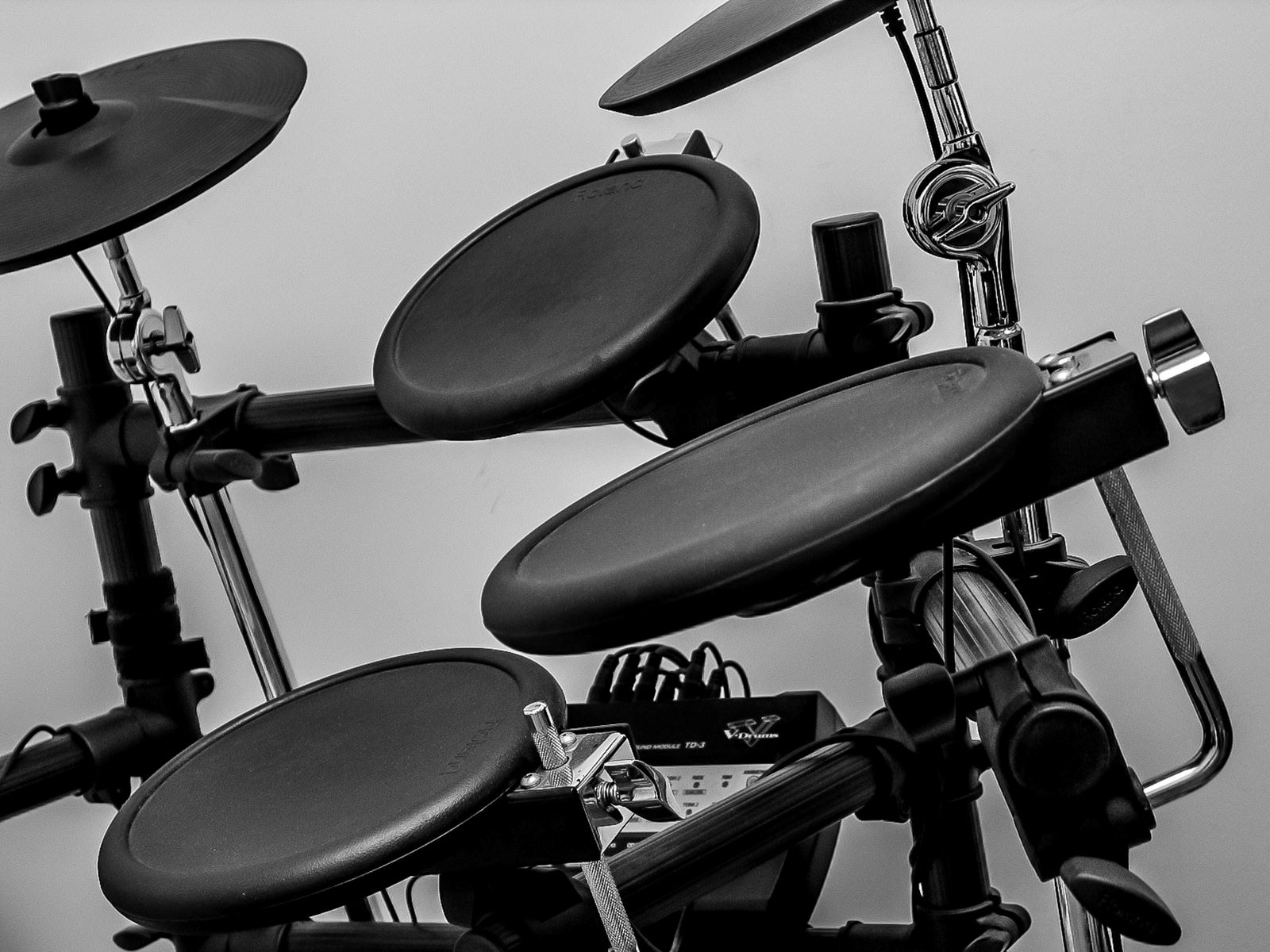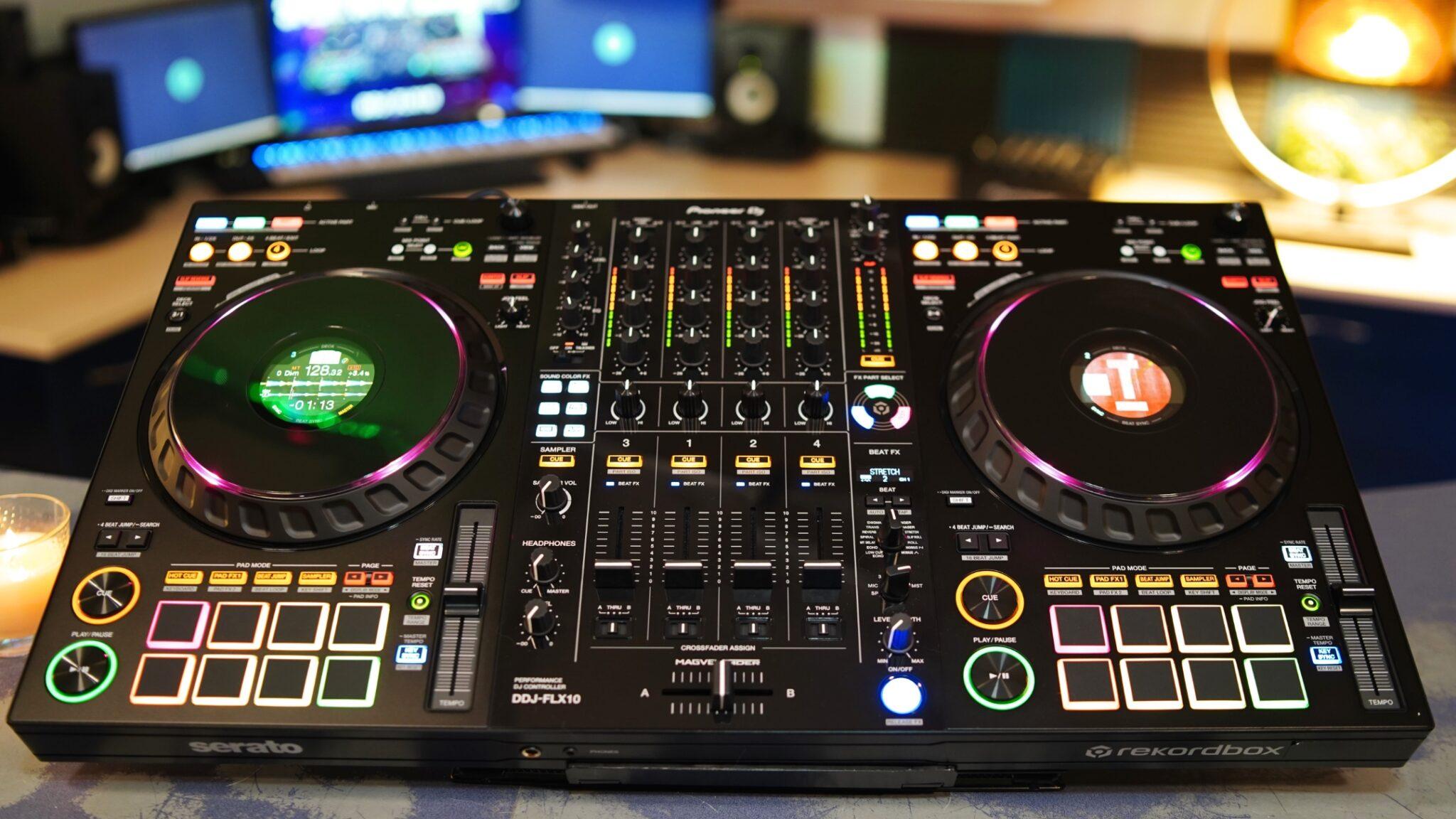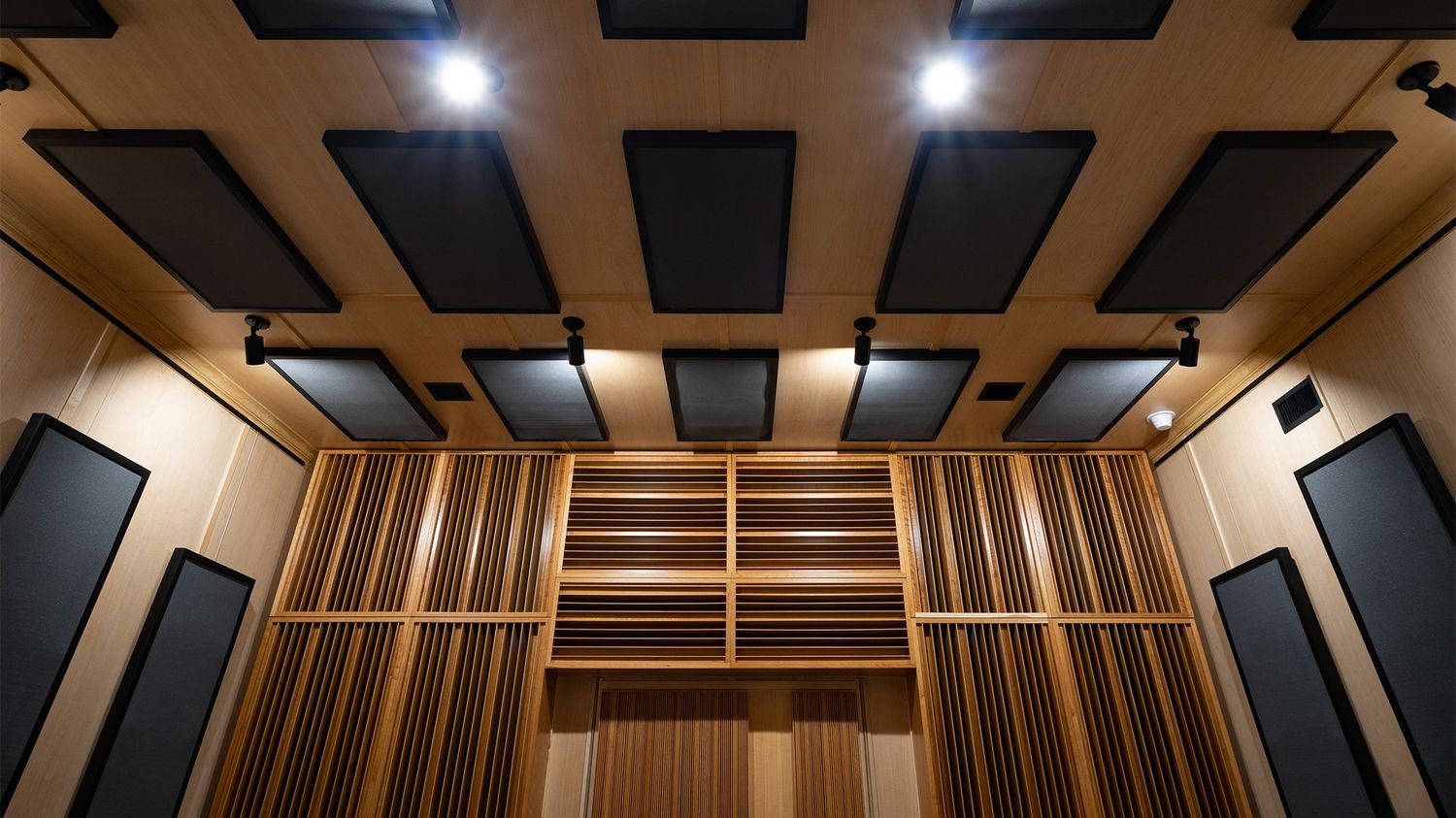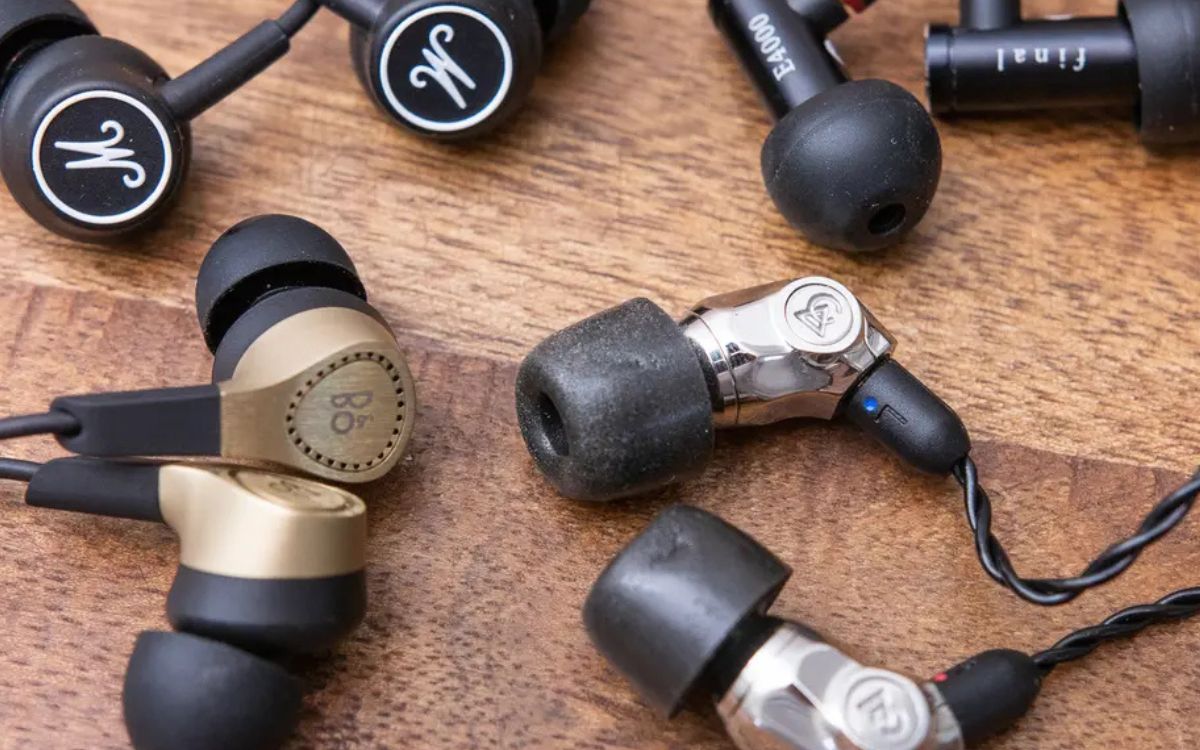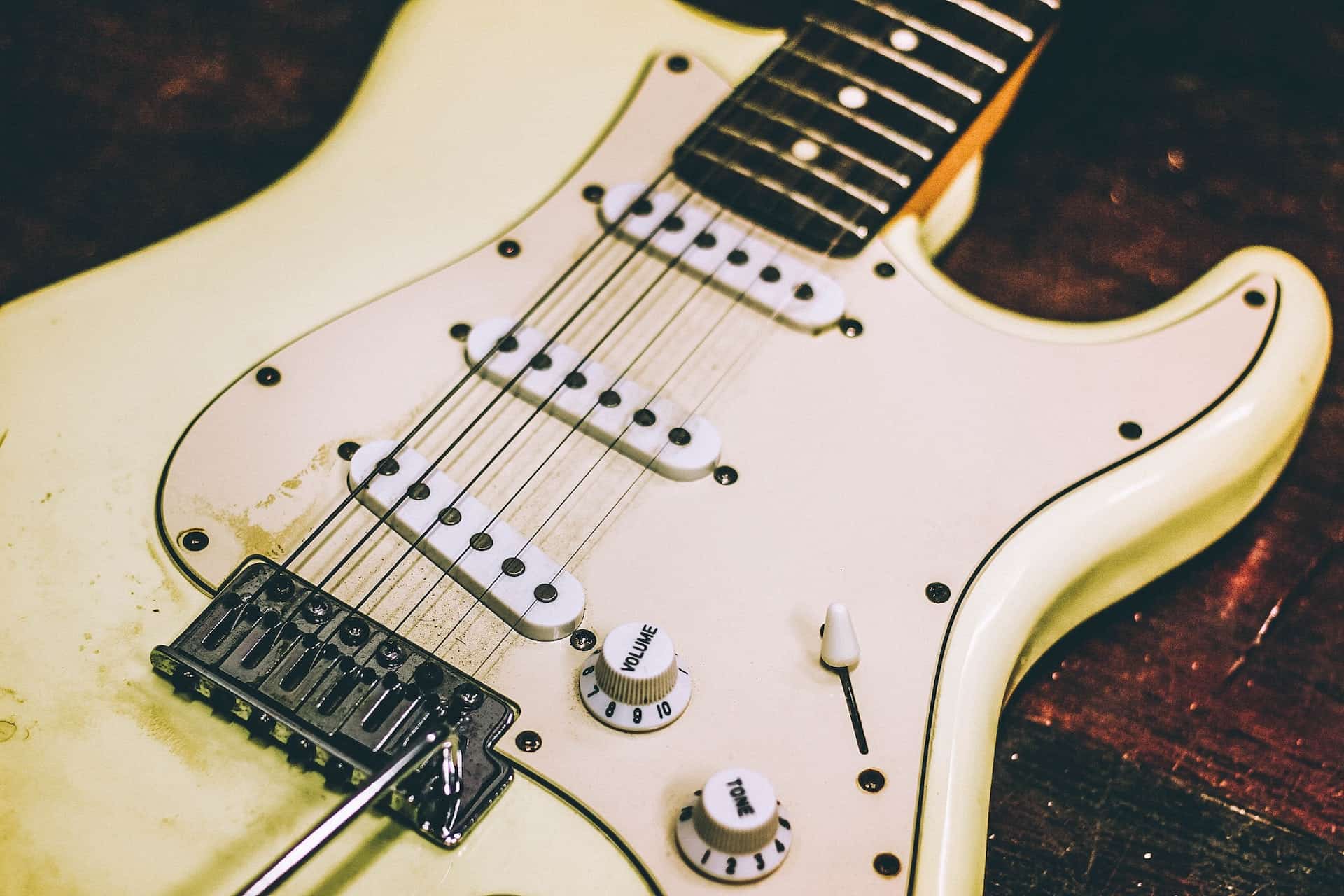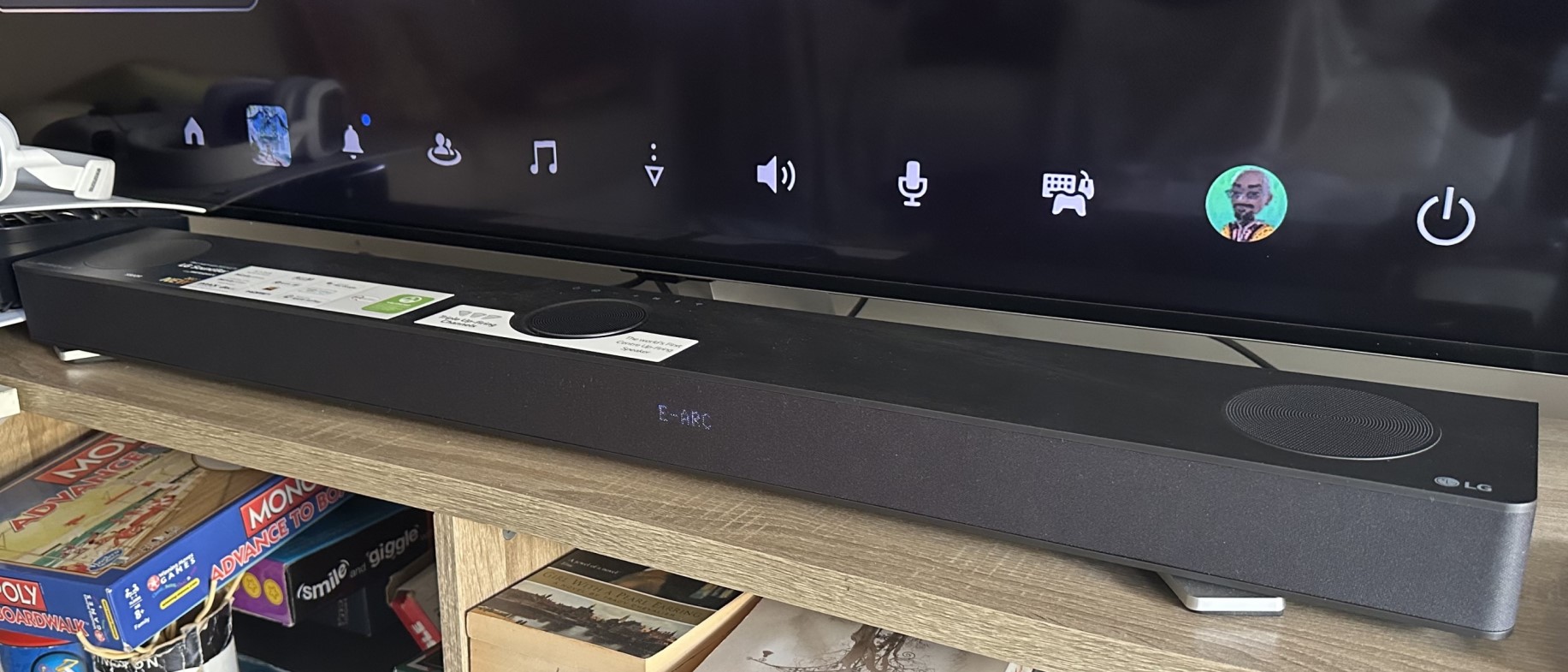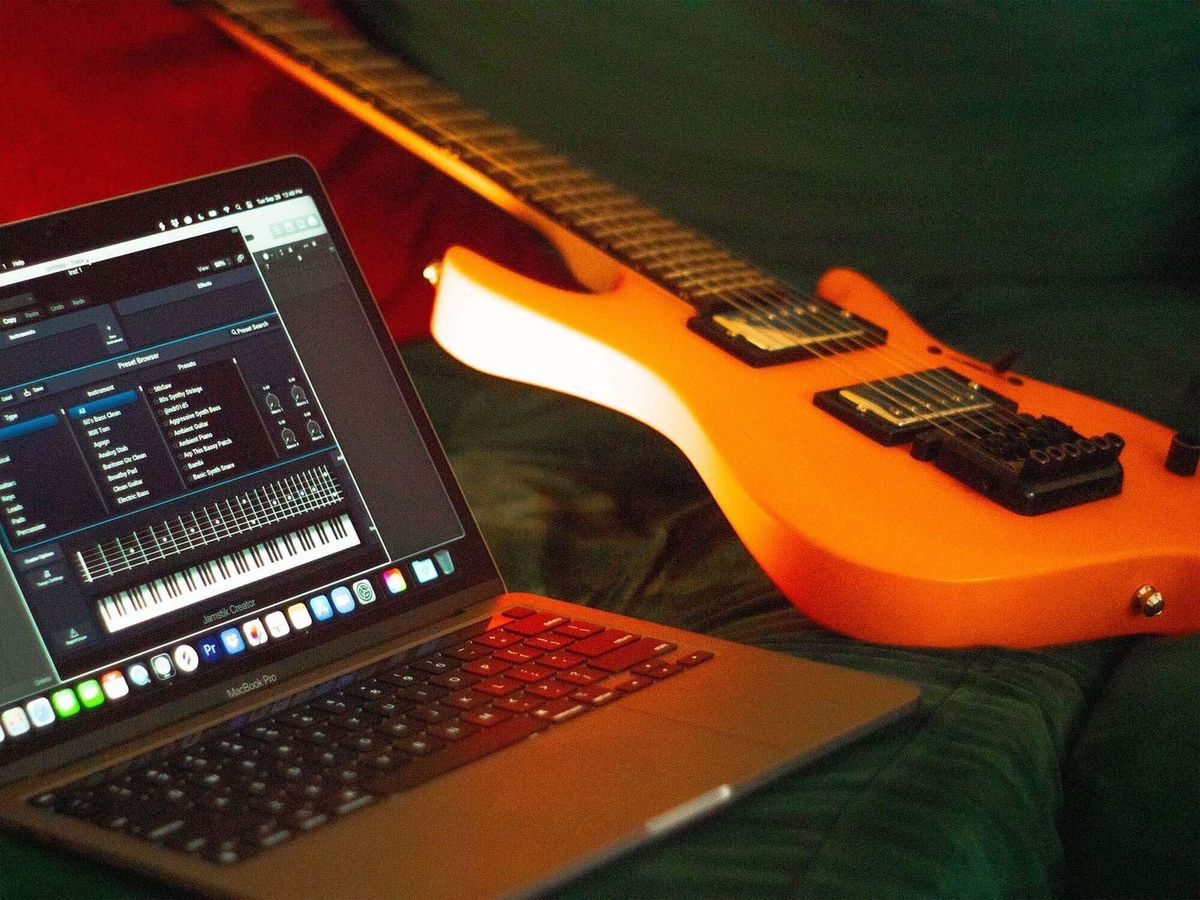Home>Devices & Equipment>Earbuds>How Do Earbuds Work With IPhone


Earbuds
How Do Earbuds Work With IPhone
Modified: January 22, 2024
Discover how earbuds work with iPhone and enhance your audio experience. Explore the compatibility and functionality of earbuds with your favorite Apple device.
(Many of the links in this article redirect to a specific reviewed product. Your purchase of these products through affiliate links helps to generate commission for AudioLover.com, at no extra cost. Learn more)
Table of Contents
Introduction
Welcome to the world of earbuds and the seamless integration they offer with the iPhone. With these tiny, stylish devices, you can enjoy your favorite music, take calls, and immerse yourself in audio entertainment on the go. But have you ever wondered how earbuds work with your iPhone? In this article, we’ll take a closer look at the inner workings of earbuds, their compatibility with the iPhone, and the technology that enables them to deliver exceptional audio experiences.
Earbuds, also known as in-ear headphones or earphones, have become incredibly popular in recent years due to their compact size, convenience, and superior sound quality. They are specifically designed to fit snugly into the ear canal, providing a comfortable and secure listening experience. Unlike traditional headphones, which rest on the outer ears, earbuds deliver sound directly into the ear, resulting in a more immersive audio experience and better noise isolation.
Earbuds are typically equipped with a small driver unit, which houses the components responsible for producing sound. These components include a diaphragm, voice coil, and magnet, working together to convert electrical signals from your iPhone into audible sound waves. The diaphragm vibrates in response to the electrical signals, creating the sound that you hear when using earbuds.
When it comes to compatibility with the iPhone, most earbuds are designed to work seamlessly with Apple devices, including iPhones, iPads, and iPods. This means that you can easily connect your earbuds to your iPhone and enjoy your favorite audio content without any hassle.
There are two types of earbuds: wired and wireless. Wired earbuds connect to your iPhone using a physical cable, while wireless earbuds use Bluetooth technology to establish a wireless connection to your device. Each type has its own advantages and considerations, so let’s explore them in more detail in the next section.
Understanding Earbuds
Earbuds have come a long way since their inception, and understanding their design and functionality can help you make the most informed choice when choosing a pair for your iPhone.
As mentioned earlier, earbuds are designed to fit comfortably in the ear canal, creating a seal that enhances audio quality and helps to block out external noise. This design not only delivers a more immersive audio experience but also allows for better clarity and detail in the sound reproduction.
Earbuds consist of three main components: the driver unit, the cable, and the ear tips. The driver unit, also known as the transducer, is responsible for converting electrical signals into sound waves. It consists of a diaphragm, voice coil, and magnet. When the electrical signals from your iPhone pass through the voice coil, it creates a magnetic field that interacts with the magnet, causing the diaphragm to vibrate and produce sound.
The cable of the earbuds connects the driver unit to the audio source, which in this case is your iPhone. The cable not only carries the electrical signals but also provides durability and flexibility. It is essential to choose earbuds with a sturdy and tangle-resistant cable to ensure longevity and hassle-free usage.
The ear tips, or ear cushions, are what make direct contact with your ear canal. They come in various sizes and materials to ensure a comfortable fit for different users. Choosing the right size and material for your earbuds is crucial as it affects not only the comfort but also the sound quality. A proper seal between the ear tip and ear canal is necessary to achieve optimal sound isolation and bass response.
In addition to the main components, some earbuds also feature built-in microphones and control buttons. The microphone allows you to make and receive calls hands-free, while the control buttons enable you to adjust the volume, play/pause music, skip tracks, and answer or end calls without needing to touch your iPhone.
Now that we have a better understanding of the anatomy of earbuds let’s explore the different types available in the market and their compatibility with iPhones in the next section.
Types of Earbuds
When it comes to earbuds, there are two main types: wired and wireless. Each type offers its own set of advantages and considerations, catering to different user preferences and needs.
Wired Earbuds
Wired earbuds, as the name suggests, connect to your iPhone using a physical cable. They have been around for years and remain a popular choice due to their simplicity and reliable connection. With wired earbuds, you don’t have to worry about battery life or connectivity issues. They are plug-and-play devices that seamlessly work with your iPhone.
Wired earbuds typically come with a 3.5mm headphone jack, which is the standard audio connection found on most smartphones and audio devices. However, with the release of the iPhone 7 and subsequent models, Apple eliminated the headphone jack, requiring users to utilize the Lightning connector or a headphone jack adapter to connect wired earbuds to their iPhone.
When choosing wired earbuds, it is important to consider factors such as cable length, durability, and sound quality. Opting for a tangle-resistant cable and high-quality drivers can ensure a long-lasting and enjoyable audio experience.
Wireless Earbuds
Wireless earbuds have gained immense popularity in recent years, offering users a truly wireless audio experience. These earbuds use Bluetooth technology to establish a wireless connection between your iPhone and the earbuds, eliminating the need for cables.
One of the main advantages of wireless earbuds is the freedom of movement they provide. Without any cables, you can move around freely, whether you’re working out, commuting, or simply going about your daily activities. Wireless earbuds also often come with a charging case, which not only keeps them secure when not in use but also serves as a portable power bank for charging on the go.
With advances in Bluetooth technology, wireless earbuds offer excellent sound quality, allowing you to enjoy your favorite music with clarity and immersive sound. However, it is important to note that the quality of the Bluetooth connection can vary between different models and may be influenced by factors such as distance and interference.
When considering wireless earbuds, factors such as battery life, connectivity range, comfort, and compatibility with your iPhone are essential. It is worth noting that some wireless earbuds are specifically designed for Apple devices and offer seamless integration and additional features when used with an iPhone.
Now that we have explored the different types of earbuds, let’s delve into how earbuds work with the iPhone and the wireless connection in the next section.
Compatibility with iPhone
Earbuds are designed to be compatible with a wide range of devices, including the iPhone. When it comes to compatibility with iPhones, most earbuds are specifically designed to work seamlessly with Apple devices, ensuring a hassle-free and optimized audio experience.
Whether you have the latest iPhone model or an older version, you can easily connect earbuds to your device. Wired earbuds usually come with a 3.5mm headphone jack or a Lightning connector, which allows for direct connection to your iPhone. If your iPhone model does not have a headphone jack, you can use a Lightning to 3.5mm headphone jack adapter to connect wired earbuds.
Wireless earbuds, on the other hand, utilize Bluetooth technology to establish a wireless connection with your iPhone. Bluetooth is a wireless communication technology that allows for the transfer of data between devices over short distances. Most modern iPhones come with Bluetooth capabilities, enabling you to pair and connect wireless earbuds seamlessly.
One important consideration when it comes to compatibility is ensuring that your earbuds and iPhone are running on compatible software versions. Software updates can sometimes introduce changes in connectivity protocols or audio codecs, so it’s important to keep your devices updated to ensure optimal compatibility.
It is worth noting that some earbuds are specifically designed for Apple devices and offer enhanced integration and functionality when used with an iPhone. These earbuds may offer additional features such as easy pairing, automatic device recognition, and seamless switching between Apple devices signed in to the same iCloud account.
When choosing earbuds for your iPhone, it is also important to consider factors such as sound quality, comfort, durability, and any additional features that align with your preferences and requirements. Reading reviews and comparing different models can help you make an informed decision and find earbuds that are both compatible with your iPhone and meet your audio needs.
Now that we have explored compatibility, let’s dive into the wireless connection and the Bluetooth technology that powers it in the next section.
Wireless Connection
The wireless connection between your iPhone and earbuds is made possible through the use of Bluetooth technology. Bluetooth is a wireless communication technology that allows devices to connect and exchange data over short distances.
When it comes to earbuds, Bluetooth enables them to establish a wireless connection with your iPhone, eliminating the need for any physical cables. This wireless connection provides you with the freedom to move around without being tethered to your phone, making it ideal for activities such as exercising, commuting, or simply enjoying audio content on the go.
Bluetooth operates on the 2.4 GHz frequency band, which is a shared spectrum used by several other devices, such as Wi-Fi routers and microwaves. To avoid interference, Bluetooth uses frequency-hopping spread spectrum (FHSS) technology. This technology allows Bluetooth devices to rapidly hop between different frequencies within the allocated band, minimizing the chances of interference and ensuring a stable and reliable connection.
Bluetooth technology has evolved over the years, with each new version introducing improvements in terms of speed, range, and power efficiency. The most common version of Bluetooth used in earbuds is Bluetooth 4.0 (or above), which offers a reliable connection, low power consumption, and support for high-quality audio streaming.
One of the key aspects of the wireless connection is the pairing process. When you want to connect your earbuds to your iPhone for the first time, you need to put them in pairing mode. This mode allows your iPhone to discover and establish a secure connection with the earbuds. Once the initial pairing is successful, subsequent connections between the devices are usually automatic, as long as they are within range and both devices have Bluetooth enabled.
It is important to note that the range of the wireless connection can vary depending on the specific earbud model and environmental conditions. In general, the range can be anywhere from 30 to 100 feet, but obstructions such as walls or interference from other devices can reduce the effective range.
Overall, the wireless connection provided by Bluetooth technology allows for a convenient and cable-free experience when using earbuds with your iPhone. It offers flexibility, mobility, and ease of use, making it a popular choice for those seeking a streamlined audio solution.
Next, let’s delve deeper into the Bluetooth technology that powers the wireless connection between your iPhone and earbuds.
Bluetooth Technology
Bluetooth technology plays a pivotal role in enabling the wireless connection between your iPhone and earbuds. It is a widely used wireless communication standard that allows devices to connect and exchange data over short distances.
The development of Bluetooth technology started in the late 1990s, with the aim of creating a wireless alternative to traditional wired connections. It was named after the tenth-century Danish King Harald Bluetooth, who united the tribes of Denmark, Sweden, and Norway, symbolizing the goal of unifying different communication devices.
Bluetooth technology operates on the 2.4 GHz frequency band, which is a globally available unlicensed spectrum. This band is also used by other devices such as Wi-Fi routers, cordless phones, and microwave ovens. However, Bluetooth devices employ frequency-hopping spread spectrum (FHSS) technology to avoid interference. FHSS allows Bluetooth devices to switch rapidly between different frequencies within the allocated band, minimizing the impact of interference and ensuring a reliable connection.
Over the years, Bluetooth technology has evolved with each new version introducing improvements in terms of speed, range, power consumption, and audio quality. The most common version used in earbuds and iPhones is Bluetooth 4.0 (or above), also known as Bluetooth Low Energy (BLE). BLE offers a balance between power efficiency and data transmission speed, making it suitable for portable devices like earbuds.
One of the key features of Bluetooth technology is its ability to connect multiple devices simultaneously. With Bluetooth, you can connect multiple earbuds to your iPhone or connect your iPhone to other Bluetooth-enabled devices such as speakers or smartwatches.
When it comes to audio streaming, Bluetooth technology supports various audio codecs, which are algorithms used to encode and decode digital audio data. Common audio codecs supported by Bluetooth include SBC (Subband Coding), AAC (Advanced Audio Codec), and aptX. These codecs impact the quality of audio transmission between your iPhone and earbuds, with aptX offering better audio quality compared to SBC or AAC.
With the advancements in Bluetooth technology, features like Bluetooth 5.0 and later versions have further improved the range, speed, and stability of wireless connections. These newer versions also support features such as simultaneous audio streaming to multiple devices and enhanced battery efficiency.
Overall, Bluetooth technology plays a crucial role in enabling the wireless connection between your iPhone and earbuds. It provides a reliable and convenient means of listening to music, making calls, and enjoying audio content without the hassle of cables.
Next, let’s explore how to pair your earbuds with your iPhone and the various controls available for managing your music and calls.
Pairing Earbuds with iPhone
Pairing your earbuds with your iPhone is a straightforward process that allows you to establish a wireless connection between the two devices. Once paired, you can seamlessly enjoy your favorite audio content without the hassle of cables.
The process of pairing your earbuds with your iPhone may vary slightly depending on the specific model and brand. However, the general steps to pair earbuds with an iPhone are as follows:
- Make sure your earbuds are charged and turned on. Some earbuds may enter pairing mode automatically when turned on, while others may require you to press and hold a specific button or combination of buttons to initiate the pairing process.
- On your iPhone, go to the Settings menu and select “Bluetooth”. Ensure that Bluetooth is turned on.
- Your iPhone will start scanning for available devices. Wait for your earbuds to appear on the list of available devices.
- Once your earbuds appear, tap on them to initiate the pairing process.
- Follow any on-screen prompts or instructions that may appear on your iPhone. This may include entering a passcode or confirming the pairing request on both the iPhone and the earbuds.
- Once the pairing process is complete, you will see a message on your iPhone indicating that your earbuds are connected. You can now enjoy your audio content wirelessly through your earbuds.
It is important to note that some earbuds may have additional features or companion apps that can enhance the pairing and customization experience. These features can include audio equalization settings, firmware updates, and customized touch controls. Consult the user manual or manufacturer’s website for specific instructions on pairing and utilizing these additional features.
Once your earbuds are paired with your iPhone, they will usually automatically connect to your device whenever they are within range and both Bluetooth functions are enabled. This means that you don’t need to go through the pairing process every time you want to use your earbuds.
However, if you want to switch the connection to a different device or pair your earbuds with a new iPhone, you may need to manually disconnect them from the current device or initiate the pairing process again.
Now that your earbuds are paired with your iPhone, let’s explore how you can control your music and manage your calls effortlessly.
Controlling Music and Calls
Controlling your music and managing calls with your earbuds provides a convenient and hands-free experience. With the right set of controls, you can easily navigate through your playlist, adjust the volume, and handle incoming calls without touching your iPhone.
Most earbuds come with built-in control buttons or touch-sensitive surfaces that allow you to interact with your iPhone’s audio functions. The specific controls can vary depending on the brand and model of your earbuds, but common functions include:
- Play/Pause: Pressing the play/pause button allows you to start or stop the playback of your music or audio content.
- Volume Adjustment: Some earbuds have dedicated buttons or touch controls to increase or decrease the volume. You can easily adjust the volume levels without needing to reach for your iPhone.
- Skip Tracks: With a double press or swipe gesture, you can skip to the next track in your playlist. Similarly, a triple press or swipe can take you to the previous track.
- Answer/End Calls: When you receive an incoming call, you can use the dedicated button or touch control to answer the call. To end the call, press the same button or control again. This allows for hands-free calling without having to physically handle your iPhone.
- Call Rejection: If you want to decline an incoming call, you can often do so by pressing and holding the play/pause button or a specific control for a few seconds.
In addition to these common controls, some earbuds may offer additional functionalities, such as voice assistants integration. With this feature, you can activate voice assistants like Siri or Google Assistant by a dedicated button or through voice commands. This allows you to perform a variety of tasks, such as playing specific songs, setting reminders, or sending messages, simply by using your voice.
It’s important to familiarize yourself with the specific controls of your earbuds to make the most out of their functionality. Refer to the user manual or the manufacturer’s website for detailed instructions on how to use the various controls available on your earbuds.
Overall, the ability to control your music and manage calls directly from your earbuds adds convenience and ease to your audio experience. Whether you’re commuting, working out, or simply relaxing, you can effortlessly navigate through your audio content and handle calls without having to reach for your iPhone.
Now that we’ve explored how to control your music and calls, let’s dive into another important aspect of using earbuds – charging and battery life.
Charging and Battery Life
When it comes to using earbuds, charging and battery life are important considerations. Depending on the specific model and brand, earbuds can offer varying battery life and charging options. Understanding how to charge your earbuds and their battery life can help ensure uninterrupted usage.
Most wireless earbuds come with a charging case that serves as both a storage unit and a portable charger. The charging case is equipped with a built-in battery that provides additional power to your earbuds when they are not in use. When you place your earbuds in the charging case, they automatically start charging, making it a convenient and hassle-free process.
Charging the charging case itself usually involves connecting it to a power source using a USB cable or through wireless charging, depending on the specific model. It is important to follow the manufacturer’s instructions regarding the charging process to ensure proper and safe charging of your earbuds and their case.
The battery life of earbuds can vary depending on factors such as usage, audio volume levels, and the specific features or technologies they incorporate. On average, wireless earbuds can provide anywhere from 4 to 10 hours of continuous playback on a single charge. The charging case can provide additional charges, extending the total battery life of your earbuds.
Monitoring the battery life of your earbuds is crucial to ensure that they have enough power for your needs. Many earbuds have LED indicators on the charging case that show the battery level of both the earbuds and the case itself. Additionally, some earbuds provide notifications on your iPhone, indicating the battery percentage or a warning when the battery is running low.
When it comes to charging your earbuds and the charging case, it is advisable to use the provided cables and adapters or compatible charging accessories recommended by the manufacturer. Using unauthorized accessories can potentially damage the batteries or affect charging performance.
It is worth noting that charging times can vary depending on the charging case’s battery capacity and the charging speed supported by your earbuds. However, many earbuds offer fast charging capabilities that can provide a significant amount of playback time with just a few minutes of charging. This feature is particularly useful when you need a quick charge before heading out.
To maximize the battery life of your earbuds, it is recommended to store them in their charging case when not in use. This not only helps protect them but also ensures that they are always ready for use with a sufficient charge. Additionally, keeping your earbuds in a cool and dry environment can help maintain optimal battery performance.
Understanding the charging process and battery life of your earbuds is essential for uninterrupted audio enjoyment. Make sure to follow the manufacturer’s instructions and take proper care of your earbuds and their charging case to ensure long-lasting performance.
Now that we have covered the charging and battery life aspect, let’s explore some additional features that you may find in certain earbud models.
Additional Features
Earbuds have evolved significantly over the years, and many models now come with additional features that enhance the overall audio experience. These features can vary depending on the brand and model of the earbuds, but they often provide added convenience and functionality.
Active Noise Cancellation (ANC)
Active Noise Cancellation is a popular feature found in many high-end earbuds. It uses advanced technology to filter out ambient noise, providing a more immersive audio experience. ANC is particularly useful in noisy environments, as it allows you to enjoy your music or calls without interference from external sounds.
Transparency Mode
Transparency mode is the opposite of ANC. It enables you to hear and be aware of your surroundings while wearing the earbuds. This feature can be useful when you need to stay aware of your surroundings or have conversations without having to remove the earbuds.
Water and Sweat Resistance
Many earbuds are designed to be water and sweat resistant, making them suitable for workouts and outdoor activities. These earbuds can withstand moisture and are built to be more durable, ensuring they can withstand the rigors of an active lifestyle.
Touch Controls and Customizable Controls
Some earbuds offer touch-sensitive controls, allowing you to navigate through your music and manage calls with simple taps or swipes. Additionally, certain models allow you to customize the controls using companion apps, enabling you to assign specific functions to different touch gestures or button presses.
Integration with Virtual Assistants
Many earbuds offer integration with virtual assistants such as Siri or Google Assistant. This allows you to access voice commands and perform a variety of tasks hands-free, such as checking the weather, setting reminders, or sending messages, simply by using your voice.
Audio Transparency and EQ Customization
Some earbuds provide audio transparency features that allow you to listen to your environment while still enjoying your audio content. Additionally, certain models offer equalizer (EQ) control, enabling you to customize the audio settings to fit your preferences and enhance the sound quality.
It is important to note that not all earbuds will incorporate all of these features. The availability of these features may vary depending on the brand, model, and price range of the earbuds. When selecting a pair of earbuds, consider which additional features are important to you and align with your audio preferences.
Now that we’ve explored the additional features, let’s wrap up this article.
Conclusion
Earbuds have revolutionized the way we listen to music, make calls, and enjoy audio content on our iPhones. Their compact size, convenience, and exceptional sound quality have made them a popular choice for many users. Throughout this article, we’ve explored the inner workings of earbuds, their compatibility with iPhones, and the technology that enables them to deliver immersive audio experiences.
We learned that earbuds are designed to fit snugly into the ear canal, providing a comfortable and secure listening experience. They consist of components such as a driver unit, cable, and ear tips, all working together to deliver high-quality sound directly into our ears.
When it comes to compatibility with iPhones, most earbuds are designed to work seamlessly with Apple devices. Whether you choose wired or wireless earbuds, connecting them to your iPhone is a straightforward process. Wired earbuds can connect through the headphone jack or Lightning connector, while wireless earbuds utilize Bluetooth technology.
Speaking of wireless connection, Bluetooth plays a vital role in establishing a wireless link between your iPhone and earbuds. Bluetooth technology enables reliable and convenient wireless audio streaming, allowing you to enjoy your favorite music and take calls without being tethered to your iPhone.
We explored the process of pairing earbuds with iPhones and the ability to control music and calls directly from the earbuds, providing a hands-free and convenient experience. Additionally, we touched upon the importance of charging earbuds and their battery life, as well as the availability of additional features like active noise cancellation, water resistance, touch controls, and integration with virtual assistants.
The world of earbuds is constantly evolving, and it’s exciting to see the new innovations and features that are being introduced. When choosing earbuds for your iPhone, consider factors such as sound quality, comfort, durability, and any additional features that align with your preferences and needs.
Overall, earbuds have transformed the way we interact with audio, offering a portable and immersive audio experience. Whether you’re listening to music on your daily commute or enjoying a podcast while working out, earbuds provide a convenient and high-quality audio solution. So, pick the earbuds that suit your style and preferences, and dive into the world of exceptional audio.
Thank you for joining us on this journey to understand how earbuds work with iPhones. Now, put on your favorite pair of earbuds, connect them to your iPhone, and enjoy the wonderful world of audio at your fingertips!

